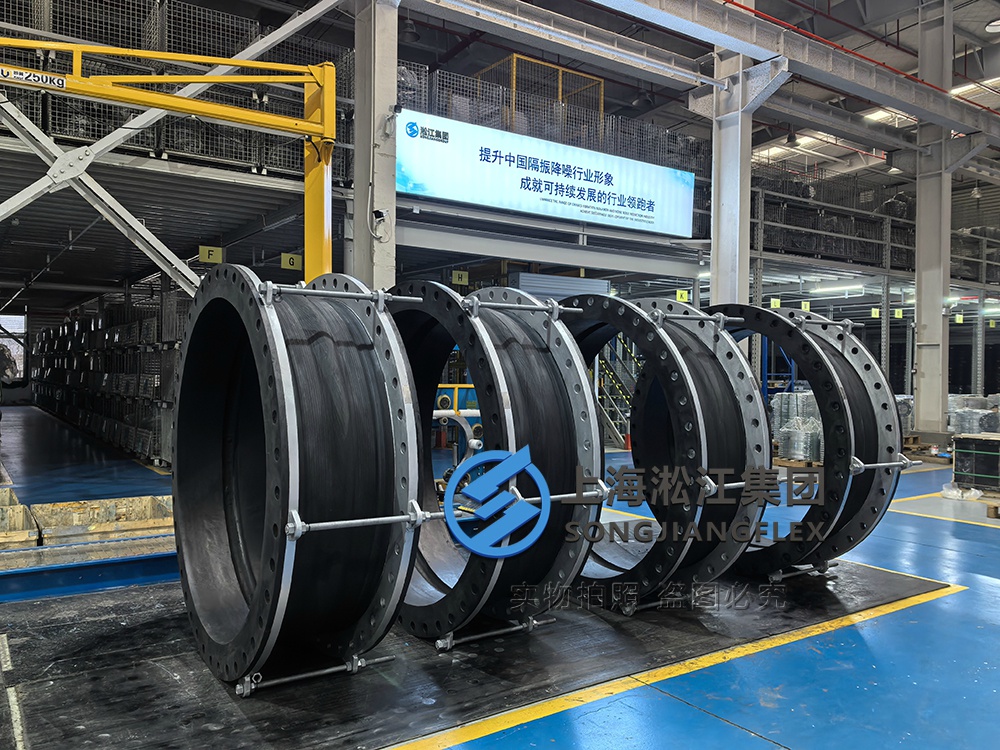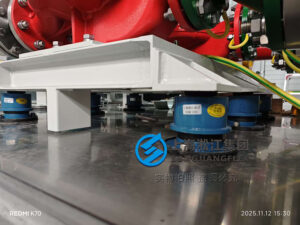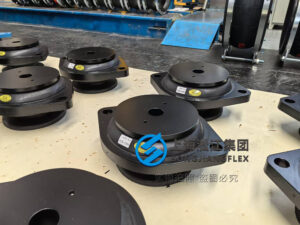Dealing with high-pressure systems in freezing climates? Our Russian client needed customized flexibility—our hand-wrapped rubber expansion joints delivered a robust, temperature-resistant solution.
Our Russian customer required durable expansion joints that could withstand sub-zero temperatures and fluctuating pressures. We customized a batch of hand-wrapped rubber expansion joints, ensuring optimal performance in extreme conditions. These joints offer high flexibility, excellent sealing, and long-term reliability—ideal for power and utility pipelines.
Let’s take a closer look at the features, production process, and application advantages of these custom-built rubber expansion joints.
What is a hand-wrapped rubber expansion joint?
Hand-wrapped rubber expansion joints are built manually layer by layer, offering excellent customization, especially for non-standard sizes or unique working conditions.
Unlike molded joints, hand-wrapped types are fabricated with precision using layered rubber sheets and reinforcing cords. This method allows greater flexibility in diameter, pressure rating, and rubber compound selection.
These joints are ideal for industrial sectors with specific requirements, such as power plants or chemical factories, where standard joints can’t be used due to irregular pipeline configurations.
Why did the Russian customer choose hand-wrapped over molded joints?
The Russian client prioritized extreme cold resistance and large diameter customization, which made hand-wrapped joints the ideal choice.
Hand-wrapped joints can incorporate cold-resistant rubber compounds like EPDM or NBR. They also allow quick adaptation to special size requirements, reducing lead times for custom orders.
Molded joints are cost-effective in bulk, but for smaller, special batches, hand-wrapped versions offer tailored performance and better resistance to crack propagation in cold climates.
What is the production process of hand-wrapped rubber expansion joints?
The process involves skilled craftsmanship—manual layer application, fabric reinforcement, vulcanization, and pressure curing—ensuring strength and flexibility.
Each layer of rubber and fabric is hand-applied around a mandrel. The joint is then vulcanized to bond layers into a solid, pressure-resistant structure that can withstand mechanical and thermal stress.
Quality control during this process is critical. At Songjiangflex, we conduct dimensional checks, rubber hardness testing, and hydro-pressure tests to ensure reliability.
What finishing work is done before shipment?
Once the joints are formed and tested, we carefully proceed with finishing operations, including surface treatment, final inspection, and detailed quality control procedures.
We treat the surface to enhance durability and aesthetics, ensuring a clean and professional look. Each joint is pressure-tested again, and our quality inspectors verify measurements, sealing performance, and visual integrity. Every step is conducted with meticulous care to guarantee a flawless product.
This attention to detail reflects our commitment to quality. We believe that even the final touches matter in delivering a reliable, professional-grade expansion joint.
What are the advantages of custom rubber expansion joints?
Customization enhances system performance by matching exact pressure, temperature, and movement requirements—reducing failures and extending service life.
Custom joints ensure precise fit and functionality, especially in legacy or complex piping systems. They also allow material selection based on fluid type and environmental exposure.
For example, in the Russian project, our team selected a high-elasticity EPDM blend and designed the arch to absorb thermal expansion effectively without overstressing the joint.
What packaging and documentation were provided for export to Russia?
Exporting to Russia requires compliance with local regulations, robust packaging for long-distance transit, and full technical documentation in Russian.
We packed the joints in reinforced wooden cases with moisture protection. Each unit was labeled, and we provided Russian-translated installation manuals and pressure test reports to ensure smooth customs clearance.
At Songjiangflex, we offer complete export documentation including certificates of origin, commercial invoices, and third-party inspection reports upon request.
Summary:
Hand-wrapped rubber expansion joints are the perfect custom solution for harsh environments. Our successful delivery to Russia highlights Songjiangflex’s capability in tailored engineering and global service.





